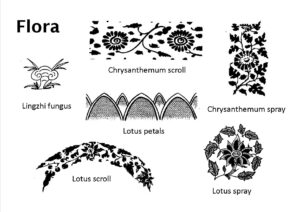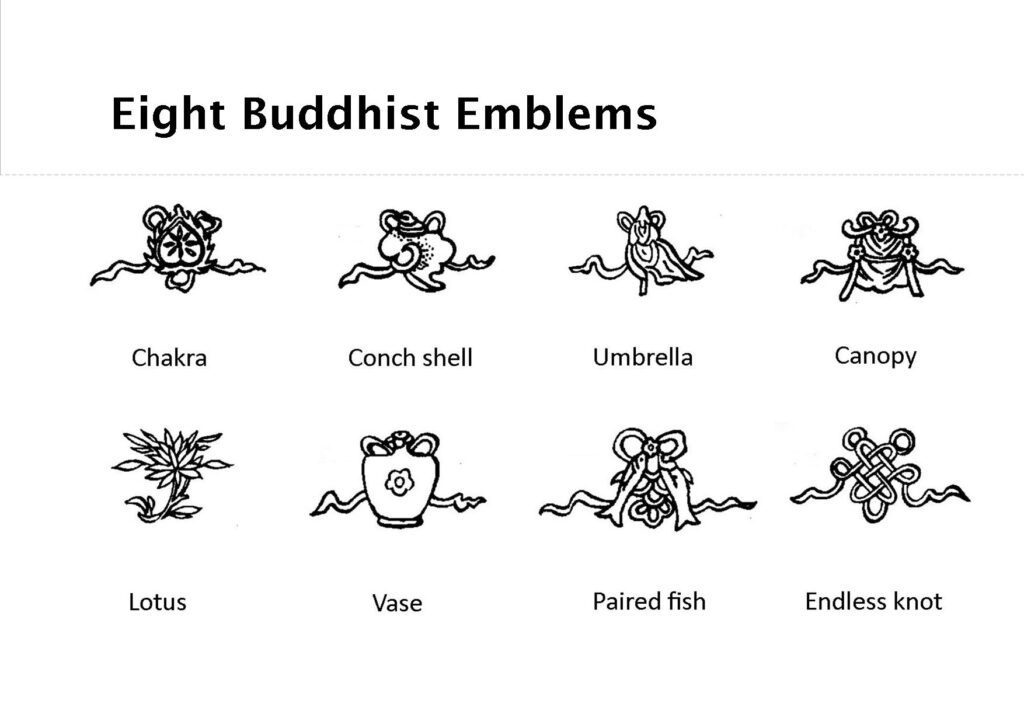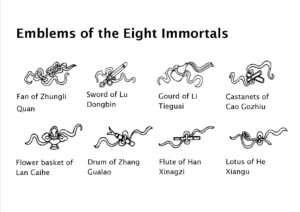CHINESE DECORATIVE MOTIFS & MEANINGS
The following is an abridged list of the most commonly found motifs in Chinese Blue & White porcelain. Some motifs were applied for their aesthetic appeal, but others also have a symbolic meaning.
Fauna
Bats – They are a symbol if longevity, prosperity & happiness. Five bats symbolizes the five blessings of age, health, wealth, virtue and a natural death.
Butterflies – Symbolic of longevity, also sometimes supposed to represent the spirits of ancestors.
Cocks – Symbolic of courage and a warlike disposition, and represent the warmth & life of the universe.
Cranes – Symbolic of longevity & are thought to be a mode of transport for the Eight Immortals.
Dragons – A five-clawed dragon has long been thought to represent the emperor & four- and three-clawed ones to be symbolic of a descending social status. However, from the 16th century onwards porcelain decorated with five-clawed dragons is known to have been made for courtiers, & at the same time some of the porcelain that is clearly of imperial quality is decorated with four- and three-clawed dragons. The dragon in Chinese mythology is also the lord of the skies & the benevolent bringer of rain. In addition, therefore, to symbolizing authority, strength and goodness, as of the emperor, it is also symbolic of fecundity & fertility.
Fish – Commonly used in decorative motifs, they are the emblem of fecundity & wealth or abundance. The pronunciation of the word for fish in Mandarin, yu, is similar to that for abundance & surplus. Paired fish are a symbol of marital bliss & harmony.
Pheasants – Crested love-pheasants are symbolic of matrimonial pairing.
Phoenixes – Phoenixes have long been used for decorative & symbolic purposes. They are emblematic of the empress & also, because they are supposed to preside over the south, they symbolize the warmth of the sun, the summer harvest &, less directly, fertility. Phoenixes can be found as part of the decoration of all periods.
Flora

Chrysanthemum – This flower represents the tenth month of the lunar calendar, autumn & joviality, & a life of ease & retirement.
Lingzhi – The sacred fungus is symbolic of longevity. It occurs in decoration with such other emblems of longevity as peach & pine trees & cranes.
Lotus – The lotus occurs as part of Chinese decoration of every period from the Han dynasty onwards. In the 14th & 15th centuries, in particular, it is frequently found in a scroll pattern, & is normally depicted in association with curious spiky leaves.It is emblematic of the seventh month & summer & conveys the notion of happiness in maturity, creative power & genius. The lotus also symbolizes marital happiness.
Peony – The peony motif was a major factor in blue & white decoration in the early years of the 15th century. It represents the third month of the lunar calendar, is the emblem of spring & is symbolic of love & affection, feminine beauty, wealth, honour & happiness.
Prunus Blossom – This is the flower of the first month & winter. It is most often depicted reserved on white against a background of dark blue on the ‘prunus blossom’ or ‘Hawthorn’ jars of the Kangxi period.
Religious Symbols
Dog of Fu – This is a Buddhist guardian lion, which occurs in ceramic decoration from the 15th century onwards. It is a creature resembling a Pekinese dog with a large bushy tail, & is often depicted playing with a brocaded ball to which ribbons are attached.
Eight Buddhist Emblems (ba zhixiang) – These emblems, which are also sometimes referred to as the Happy Omens, are often found on Ming & later ceramics. They comprise of the following:

- The Wheel or chakra (falun), symbol of Buddha’s person & of infinite changing. It is also sometimes called the Wheel of Life, the Wheel of Truth or the Holy Wheel (occasionally the Wheel is replaced by the Bell or zhong, the sound of which disperses evil spirits).
- The Conch Shell (le), the emblem of both the voice of Buddha & of a prosperous voyage. In addition it is the insignia of royalty & an appeal to wisdom.
- The Umbrella (san), which symbolises spiritual authority & charity.
- The Canopy (gai), which symbolises royalty, particularly the princely rank of Buddha, dignity, high rank & spiritual authority.
- The Lotus (hehua), which symbolises faithfulness.
- The Vase (ping), which symbolises perpetual harmony, supreme intelligence, & triumph over birth & death. It is also considered as a ceremonial jar for relics.
- The Paired Fish (shuang yu), which symbolize marriage, conjugal felicity, fertility & tenacity, & are considered to be a charm against evil.
- The Endless Knot (zhang), which symbolises longevity, Buddha’s entrails, infinity & eternity, & also promotes abundance.
During the Qing dynasty these emblems were sometimes mixed with the Eight Daoist Emblems & the arrangement does not appear to have mattered very much provided only eight emblems were depicted.
Eight Daoist Emblems (ba anxian). These are the attributes of the Eight Immortals. They sometimes appear on later ceramics & are as follows.

- The Fan of Zhungli Quan, which is said to be capable of resuscitating the dead.
- The Sword of Lu Dongbin, which was used for dispelling evil spirits.
- The Gourd of Li Tieguai, which was said to contain all kinds of magical cures & drugs.
- The Castanets of Zao Guozhiu, symbol of revival.
- The Flower basket of Lan Zaihe.
- The Drum of a bamboo tube & rods of Zhang Gualao.
- The Flute of Han Xiangzi.
- The Lotus of He Xiangu.
Miscellaneous Symbols

Classic Scrolls – These are formal linear scrolling patterns that were normally used as border patterns.
Cloud Collar – This is an important decorative motif that is variously referred to as a ‘ruyi pattern’, ‘ogival pattern’, ‘lambrequin’ or ‘lappet’, & is very commonly found in porcelain decoration from the 14th century onwards.
Cloud Scroll – This motif, which can show very many variations, is frequently found in ceramics decorated from the 14th century onwards. Clouds denote beneficial rain & fertility.
Diamond Diaper – This form of decoration is frequently used as a border to larger dishes & as a filler. Consisting of repeating geometric patterns, it is found on wares of the 14th century onwards, but begins to show considerable degeneration after the early 16th century.
Key Fret – This is a repeating design most commonly used as a band around jars & vases or else as a border pattern on dishes.
Petal Diaper – This is a very common design found on ceramics. It consists of a band of elliptical forms set at right angles to each other.
Ruyi Head – This heart shaped motif resembles the head of the curved ruyi sceptre, a ceremonial object carried by certain Buddhist deities & the emblem of monastic authority. Occurring most commonly as a repeating motif, ruyi heads are very similar, on a smaller scale, to cloud collars or lappets.
Shou – The charcter shou means longevity. It is very commonly found on blue & white wares from the 16th century onwards.
Shuangxi – This mark which may form part of the general decoration of a vessel or else be found on the base as a mark of commendation, indicates ‘two –fold joy’, ‘double happiness’ or ‘wedded bliss’. It consists of two xi characters placed side by side, often with the lowest horizontal bar running across to unite both characters. Vessels bearing the Shuangxi mark were often presented as wedding presents.
Waves – Water is depicted in various forms in decorative motifs throughout the history of blue & white porcelain, & waves, which were considered to be the abode of dragons, are very commonly found in decoration throughout the Ming dynasty. The three main types of waves are the following :
- Serpentine waves, which often form the border decoration of large dishes & are found around the rims of other wares.
- Concentric waves, which are used as a solid ground so that the top one-third of each is visible.
- Scalloped waves, which, like concentric waves, are used as a ground pattern & space filler, but they are rarer & are not normally found in decoration after the end of the 14th century.

